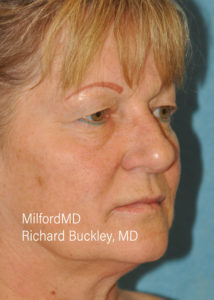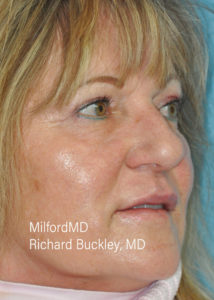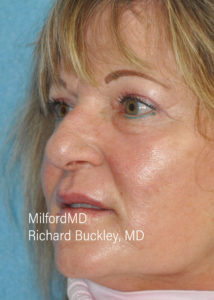Immediately after the surgery has been completed, Dr. Richard Buckley may apply tiny sterile bandages. This is not done for transconjunctival blepharoplasty. It is not crucial that the eyes be covered. However, an ointment to prevent dryness of the eye area may be used. A certain degree of swelling and bruising is normal. Cold compresses, as well as head elevation when lying down, will enhance healing and relieve discomfort. Dr. Buckley will prescribe medication for discomfort. For a week and a half following blepharoplasty, you will clean the eye area (the eyes may feel sticky, dry, and itchy). Eyedrops may be recommended. Dr Buckley will also list activities and environments to avoid in the weeks immediately following surgery. Permanent stitches will be removed in three to five days after surgery.
FAQ's
As with all facial cosmetic surgery, good health and realistic expectations are prerequisites. Blepharoplasty removes the excess fat, muscle, and skin from both upper and lower lids which can result in a refreshed, younger appearance and more firmness around the eye area. People with serious medical conditions must rely on the diagnostic skills of their own personal specialists to determine whether blepharoplasty is an option to consider. Consultation with Dr. Buckley can help you decide whether any additional, complementary procedures would maximize the outcome of the surgery.
The procedure focuses on the upper and lower eyelids by removing excess muscle, fat, and skin. Incisions are made carefully, and different methods are used according to individual requirements to avoid noticeable scarring.
Commitment to pre-and post-operative instructions is crucial. During consultations, Dr. Buckley considers factors like age, skin type, and vision obstruction, ensuring an open and honest exchange to establish the basis for a successful outcome.




